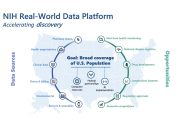
“Imagine a neighborhood on fire. Here, the firefighters have defined even dying embers as a ‘fire’ and are so busy putting those out that they are missing entire homes that are burning down and setting others ablaze.”
That’s how New York Times science reporter Apoorva Mandavilli summed up her recent story on the extraordinarily high percentage of people who get a positive COVID-19 test but aren’t really contagious. Resources are being wasted on these people, who are being told needlessly to self-quarantine and to take other measures to prevent themselves from transmitting the virus to others. Furthermore, these not-quite-false positives — those tested have the virus in their system, but not at levels sufficient to make them a danger to others — are driving the case counts that officials are using to justify ongoing lockdowns and mask mandates. Meanwhile, those who really are contagious are often being overlooked.
The most common test for diagnosing COVID-19 infections is called a PCR test. Laboratories analyze the sample and then return a result of either positive or negative, meaning the sample either does or not does contain coronavirus.
“We’ve been using one type of data for everything, and that is just plus or minus — that’s all,” Dr. Michael Mina, an epidemiologist at the Harvard T.H. Chan School of Public Health, told Mandavilli. “We’re using that for clinical diagnostics, for public health, for policy decision-making.”
The problem is that a simple positive result doesn’t provide enough information for making such decisions, Mina said. What doctors and public-health officials really need to know is how much of the virus the individual is carrying.
Mandavilli explained:
The PCR test amplifies genetic matter from the virus in cycles; the fewer cycles required, the greater the amount of virus, or viral load, in the sample. The greater the viral load, the more likely the patient is to be contagious.
This number of amplification cycles needed to find the virus, called the cycle threshold, is never included in the results sent to doctors and coronavirus patients, although it could tell them how infectious the patients are.
In three sets of testing data that include cycle thresholds, compiled by officials in Massachusetts, New York and Nevada, up to 90 percent of people testing positive carried barely any virus, a review by The Times found.
On Thursday, the United States recorded 45,604 new coronavirus cases, according to a database maintained by The Times. If the rates of contagiousness in Massachusetts and New York were to apply nationwide, then perhaps only 4,500 of those people may actually need to isolate and submit to contact tracing.
How are so many people with low viral loads generating positive tests? Simply put, there is no standard for how many cycles a test should run before giving up and declaring a sample negative. Many labs are reporting positives after 37 or even 40 cycles.
“I’m shocked that people would think that 40 could represent a positive,” University of California, Riverside, virologist Juliet Morrison told Mandavilli.
Morrison thinks the threshold should be 30 to 35 cycles; Mina believes it should be 30 or even lower. “Those changes would mean the amount of genetic material in a patient’s sample would have to be 100-fold to 1,000-fold that of the current standard for the test to return a positive result — at least, one worth acting on,” wrote Mandavilli.
Dr. Ashish Jha, director of the Harvard Global Health Institute, also expressed astonishment at the high proportion of positive PCR tests with low viral loads. He told Mandavilli that while he had already considered the possibility that the tests were not the best means of keeping up with a quickly changing situation, “What I am realizing is that a really substantial part of the problem is that we’re not even testing the people who we need to be testing,” namely those in the early stages of infection.
Mina believes the PCR test could be used to identify potential carriers, but those with low viral loads should be retested frequently with faster, less sensitive tests.
“It might not catch every last one of the transmitting people, but it sure will catch the most transmissible people, including the superspreaders,” he said. “That alone would drive epidemics practically to zero.”
Unfortunately, the inflated case counts generated by the PCR test provide cover for power-hungry politicians to maintain their dictatorial COVID-19 policies, so even though reducing the cycle threshold could actually help save lives — the very thing they claim their edicts are trying to accomplish — don’t expect them to push for such a change.
Image: grejak/iStock/Getty Images Plus
Michael Tennant is a freelance writer and regular contributor to The New American.





